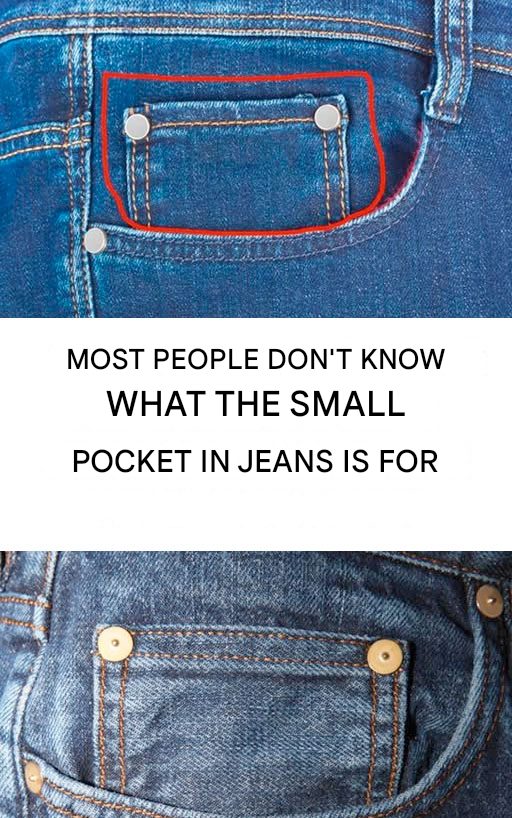The small pocket inside the larger one on your pants is probably something you’ve already seen without really noticing. It appears to be little and maybe a little pointless. However, it has withstood decades of trend shifts and continues to be a staple in contemporary jeans despite its large and frequently disregarded character. Why, though, is this tiny pocket still in use today? Is it a holdover from a past time, concealing a forgotten purpose or a historical secret? Let’s examine the history of this odd pocket to see how it developed and how it still finds a place in our day-to-day existence.

The legendary collaboration between Levi Strauss and Jacob Davis in 1873 marks the beginning of this small pocket’s history. Because of these two trailblazers, denim jeans as we know them today were created with longevity and functionality in mind. Working men at the time, especially workers, miners, and cowboys, required tough pants that could endure long days of strenuous work. However, they also possessed a necessary piece of equipment: the pocket watch.
Valuable objects, pocket watches were frequently crafted from delicate materials and handled with extreme caution. Levi Strauss and Jacob Davis created a tiny, reinforced pocket inside their pants’ bigger main pocket to keep them safe and secure while they were at work. The purpose of this small pocket, which was perfectly positioned for convenience, was to hold the pocket watch and keep it safe from harm caused by the tough working conditions.
Pocket watches progressively gave way to wristwatches as the more practical and widely available choice as the years went by. The early 20th century saw the development of wristwatches, which gave individuals a convenient method to check the time without having to reach into their pockets. Consequently, the small pocket’s initial purpose of containing a pocket watch was rendered obsolete. But the little pocket persisted even after wristwatches became popular. It was kept in jeans because it was an essential component of the denim jeans’ personality and design, not because it was no longer functional. Even when the world progressed in other ways, it remained a relic of the past that continued to adorn jeans, serving as a mark of tradition and heritage.
Even though many people may have forgotten the pocket’s initial function, it did not completely disappear. People have discovered a number of additional uses for the small pocket throughout the years. Nowadays, the little pocket is most frequently used to hold tiny objects like coins, which are frequently too small to fit in the bigger pocket. Without taking up too much room in the main pocket, it might be a handy spot to store spare change or a few loose banknotes. Small keys, such as those for bikes, vehicles, or lockers, are also frequently kept in the micro pocket.
It doesn’t take up room in the main pocket and keeps them safe and handy. Many people in today’s tech-savvy society keep USB drives, earbuds, and other small electronic gadgets in this tiny pocket so they are always accessible and protected. Personal belongings that must be easily accessible but don’t fit neatly in the larger pocket, like a matchbook, lip balm, or a lighter, are sometimes kept in the mini pocket. Other others only find the small pocket to be aesthetically pleasing. It pays homage to the denim heritage while adding a dash of flair and vintage charm.
Even if its function has changed, the small pocket’s continued presence in contemporary fashion demonstrates the enduring influence of vintage design. What started out as a useful way to carry a pocket watch in the harsh 19th-century environment has developed into a representation of tradition, usefulness, and ageless style. Although the introduction of wristwatches has rendered the small, inconspicuous pocket obsolete, it has persisted in its use.
The small pocket symbolizes something timeless—something that ties us to the past while accommodating our contemporary demands—in a world where fashion trends are constantly shifting. It serves as a testament to the enduring power of design decisions that stand the test of time and serves as a reminder of the creativity and resourcefulness that went into making the clothing we wear today.
Therefore, remember to appreciate that small pocket the next time you put on jeans. In reality, what appears to be a minor and potentially unnecessary feature is a historical artifact—a necessity-driven creation that has been conserved over many generations. It is a link to the past, bringing with it the heritage of laborers from a bygone era, whether you use it for coins, keys, or just because it adds to the allure of the jean. It serves as a straightforward but intriguing reminder that sometimes the most interesting stories can be found in the smallest details.
